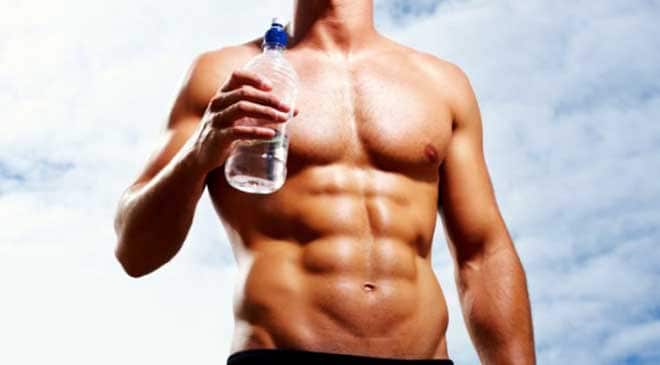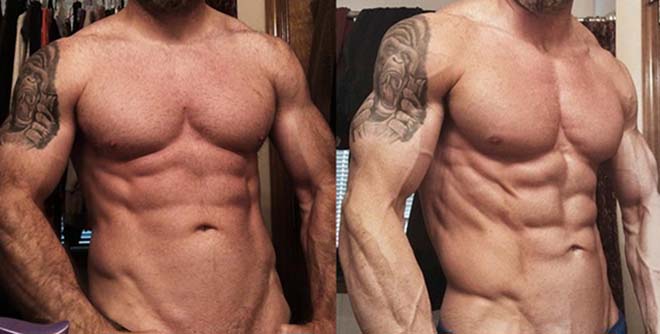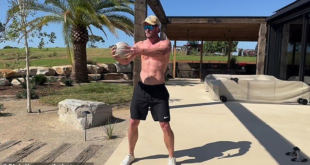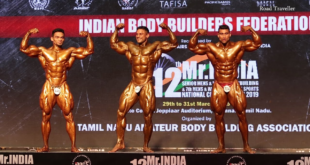This article is specially dedicated to the advanced lifters/athletes who are either planning to compete or planning for a photo shoot. Through this article, we shall be discussing about an imperative, yet an interesting topic, that is, the peak week!
 What Exactly Is Peak Week?
What Exactly Is Peak Week?
As a matter of fact, a peak week gives you merely 5% change in your appearance though, for an athlete even that 5% can give him that extra edge at stage. But here is a reality check, if you are not shredded enough, nothing can help you in getting that hard and dense look!
Anyway, here we are with the 3 common mistakes that bodybuilders commit during the peak week:
Mistake #1 Over manipulation of the carbohydrates
Carbohydrates or the carb loading is done in the last few days of the peak week. According to the traditional protocol, the carbs are depleted in the initial days followed by the carb loading phase. The carb loading is done in order to fill the muscle glycogen and to give the bodybuilder a fuller look. The logic is simple, carbs have a tendency to pull water towards themselves and during the glycogen fulfilment phase, the carb loading along with the last day of water depletion helps an athlete to achieve that tight and dry look!
However, when it comes to carb depletion a couple of week before the contest, if an athlete is already depleting carbohydrates since 6-8 weeks, for instance, 30-50gm of carbs intake per day, the further carb depletion may not help in that case. (Again depends on body to body)
Rather, the carb loading phase might be a game changer in that case. The most common mistake the bodybuilders commit is with the quantity of carbs during the loading phase. If you are on a carb depleted state from quite long, a sudden increase in carbs intake would not be a smart idea. The key is to increase the carbs gradually.
Mistake #2 Cutting Water Completely
 We all know that Muscles are 70% water. Thus, the glycogen fulfilment of the muscle can be done properly only when the body is hydrated enough. Since, the carbs loading is also supported by the water, it’s imperative to maintain the water intake during the peak week. In the initial 5-6 days of the peak week the water intake has to be really high and should be cut suddenly a day before the show. This basically keeps the body in the flushing mode even when you are in water depletion phase on that last day.
We all know that Muscles are 70% water. Thus, the glycogen fulfilment of the muscle can be done properly only when the body is hydrated enough. Since, the carbs loading is also supported by the water, it’s imperative to maintain the water intake during the peak week. In the initial 5-6 days of the peak week the water intake has to be really high and should be cut suddenly a day before the show. This basically keeps the body in the flushing mode even when you are in water depletion phase on that last day.
The common mistake that athletes commit is completely eliminating the water 2-3 days before with the fear of water retention. The irony is, the issue of water retention comes due to adding too many carbs and not the water. The overloading of carbs causes the water to spill under the skin which gives you that softer appearance. Always remember, body is a way smarter machine than you think. It will always try to maintain its osmotic ratio i.e that water ratio between the intracellular and extracellular membranes.
Mistake #3 Eliminating Sodium
 Again, probably the most common mistake done by the majority of bodybuilders. During the peak week or may a month before, a lot of bodybuilders eliminates sodium completely from their diet. Now this is completely pointless and unhealthy for the body.
Again, probably the most common mistake done by the majority of bodybuilders. During the peak week or may a month before, a lot of bodybuilders eliminates sodium completely from their diet. Now this is completely pointless and unhealthy for the body.
Sodium plays a pivotal role of co-transporting the glucose generated by digestion of starch absorbed in the small intestine. Moreover, it also supports the carbs to cross the cell membranes. Not to forget it is one of the most important electrolytes that your body needs. A prolonged deficiency can be really fatal.
In fact, the sodium helps you in getting that desirable pump during the workout as it facilitates the muscle to contract and relax. Hence, do not cut sodium entirely, your body needs sodium to function! Next time when you see bodybuilders cramping on stage, it is primarily due to sodium depletion in the body.
Note: A peak week is a trial and error protocol that varies from body to body. Therefore, if you are doing it for the first time, it is better to try it once a couple of months before the main event. This will help you to understand that what actually suits your body and you can do the needful in the final preparation phase.
 IBB – Indian Bodybuilding IBB – Home of Indian Bodybuilding and Fitness
IBB – Indian Bodybuilding IBB – Home of Indian Bodybuilding and Fitness




